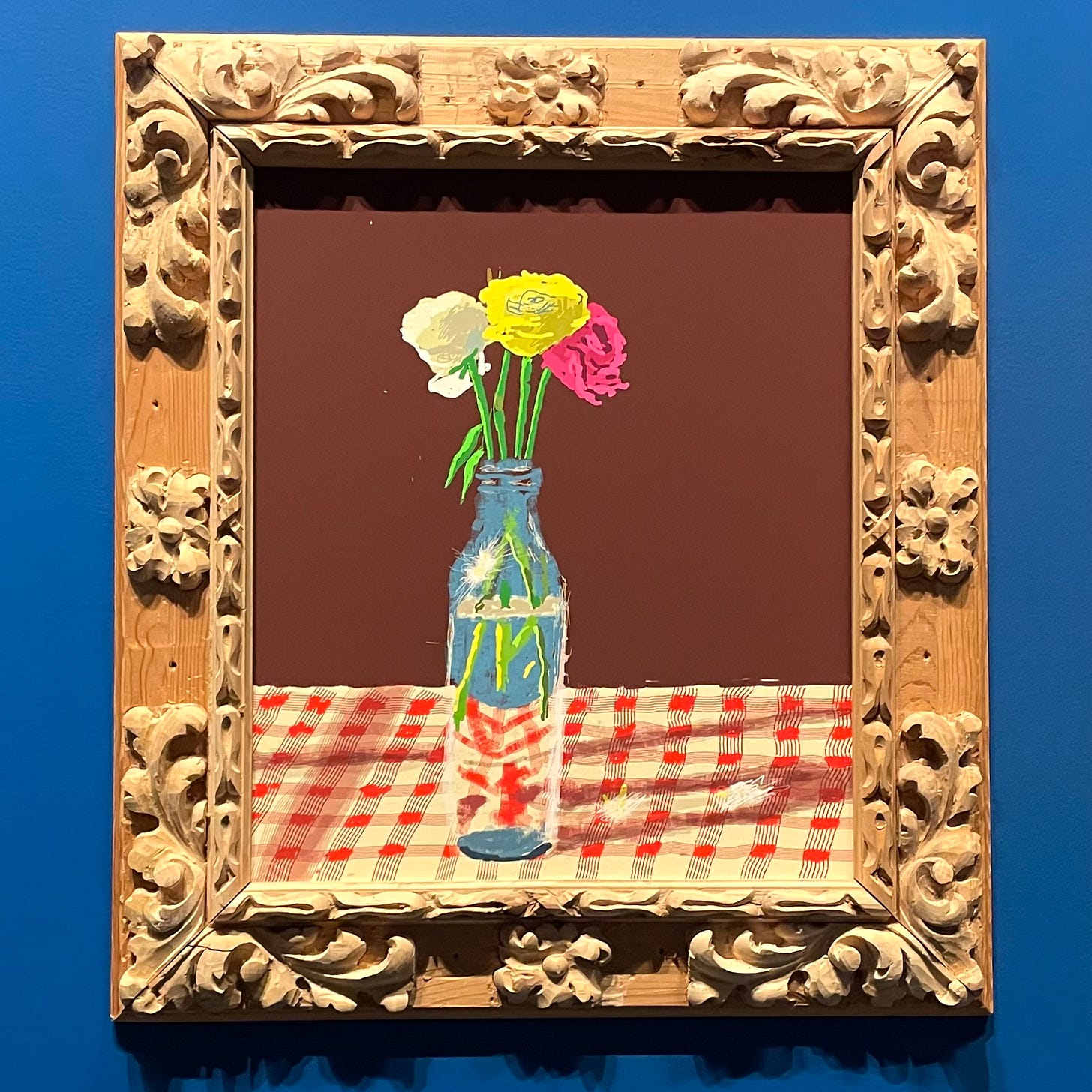EVERY WORK BY DAVID HOCKNEY appears a response to a particular pictorial problem — how to represent this person, this landscape, this tablecloth, this moon — in a way that does not impress by virtuosity, but records information both about the object and the way it is being seen.
Few artists care so little as Hockney about impressing with virtuosity and technique, nor in repeating successes for praise and wage. Fewer still are so completely dedicated to works of art as works of art, as solutions to pictorial problems, as ways of seeing the world — as a form of personal language.
At the heart of it all is a practice of drawing. For once the word — practice — suggesting an activity pursued entirely for its own sake, is appropriate. Hockney is a practising draughtsman beyond anything else, making all his works, even his films, varieties of drawing.
Drawing means hard looking, confronting the problem of an ever-changing world imagined onto a flat surface. Drawing means thinking, scrutinising, finding equivalents, creating a language, making a mark, in whatever medium you happen to have at hand.
All art is drawing. Painting is drawing in paint. Digital animation is drawing in pixels. Thinking (if art, and why not?) is drawing in neurons. Drawing is art. All the rest is the icing on the cake.
Hockney’s drawings of Yorkshire and Normandy in spring are among his greatest works. Drawing is a moment of emergence, the appearance of life, buds and blossom on bare branches, sunlight filtering onto warming ground. Drawing is the hope of continuity. Drawing is life itself.
All images from the exhibition David Hockney 25 at the Foundation Louis Vuitton, Paris, until 31st August 2025, curated by Norman Rosenthal.







